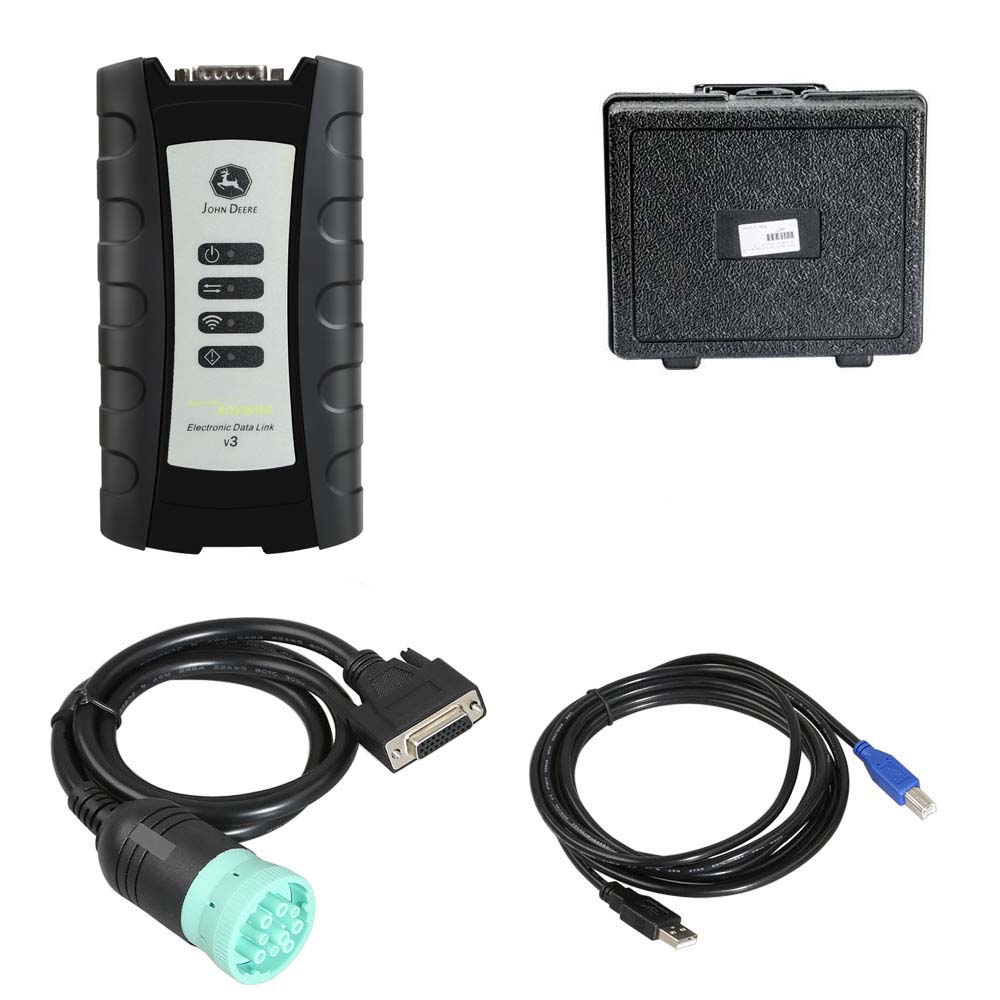When it comes to agricultural machinery, John Deere is a name that stands out for its reliability, innovation, and advanced technology. For technicians and service providers, having the right diagnostic tools is essential for maintaining the performance and efficiency of these machines. Among the key tools at their disposal are the John Deere EDL V2 and the newer EDL V3 devices. While both serve similar purposes, there are significant differences between them. In this article, we’ll explore the main distinctions between these two diagnostic interfaces.
Overview of the John Deere EDL V3 Adapter
Both the EDL V2 and EDL V3 are designed to work seamlessly with John Deere’s Service ADVISOR software, which allows users to access service manuals, perform diagnostics, and conduct various readings and tests. However, the EDL V3 introduces several enhancements that improve its functionality and usability.
Key Differences
1. Compatibility and Connectivity
One of the most notable differences between the EDL V2 and EDL V3 is their compatibility with different John Deere equipment. The EDL V3 supports a wider range of models and is designed to work with both older and newer machinery. This means that technicians will find the EDL V3 more versatile, allowing them to service a broader array of vehicles without needing multiple diagnostic tools.
Additionally, EDL V3 boasts improved connectivity options. It can connect to vehicles via both USB and Bluetooth, offering more flexibility in how diagnostics are performed. This wireless capability allows technicians to work more efficiently without being tethered to the machine.
2. User Interface and Ease of Use
The user interface of the EDL V3 has been revamped to enhance usability. Technicians will appreciate the more intuitive design, which simplifies navigation through various diagnostic functions. This improvement reduces the learning curve for new users and allows seasoned technicians to work more efficiently.
Moreover, the EDL V3 features faster processing speeds, enabling quicker data retrieval and diagnostics. This means technicians can spend less time waiting for information and more time addressing issues, ultimately improving service turnaround times.
3. Enhanced Diagnostic Features
The EDL V3 also introduces several advanced diagnostic features that are not available in the EDL V2. For instance, it includes enhanced troubleshooting capabilities that allow for more accurate diagnostics and faster identification of issues. This leads to more effective repairs and reduces the likelihood of recurring problems.
Furthermore, the EDL V3 is equipped with improved programming capabilities. It allows for easier calibration and reprogramming of vehicle controllers, which is crucial for maintaining optimal machine performance. This added functionality makes the EDL V3 a more comprehensive tool for technicians.
4. Future-Proofing and Support
As technology continues to evolve, having a diagnostic tool that can keep pace is essential. The EDL V3 is designed with future developments in mind, ensuring that it can adapt to upcoming software updates and new machine models. This forward-thinking approach means that investing in an EDL V3 will provide long-term value for service providers.
Additionally, John Deere’s commitment to customer support for the EDL V3 ensures that users will have access to the resources they need to maximize the tool’s potential. This level of support can make a significant difference in a technician’s ability to resolve issues efficiently.
In summary, while both the John Deere EDL V2 and EDL V3 serve crucial roles in diagnostics for agricultural machinery, the EDL V3 offers notable advancements in compatibility, user experience, diagnostic capabilities, and future-proofing. For technicians looking to enhance their service efficiency and effectiveness, transitioning to the EDL V3 is a wise investment. As the agricultural industry continues to embrace technology, having the best tools at your disposal is imperative for success.

Leave a Reply